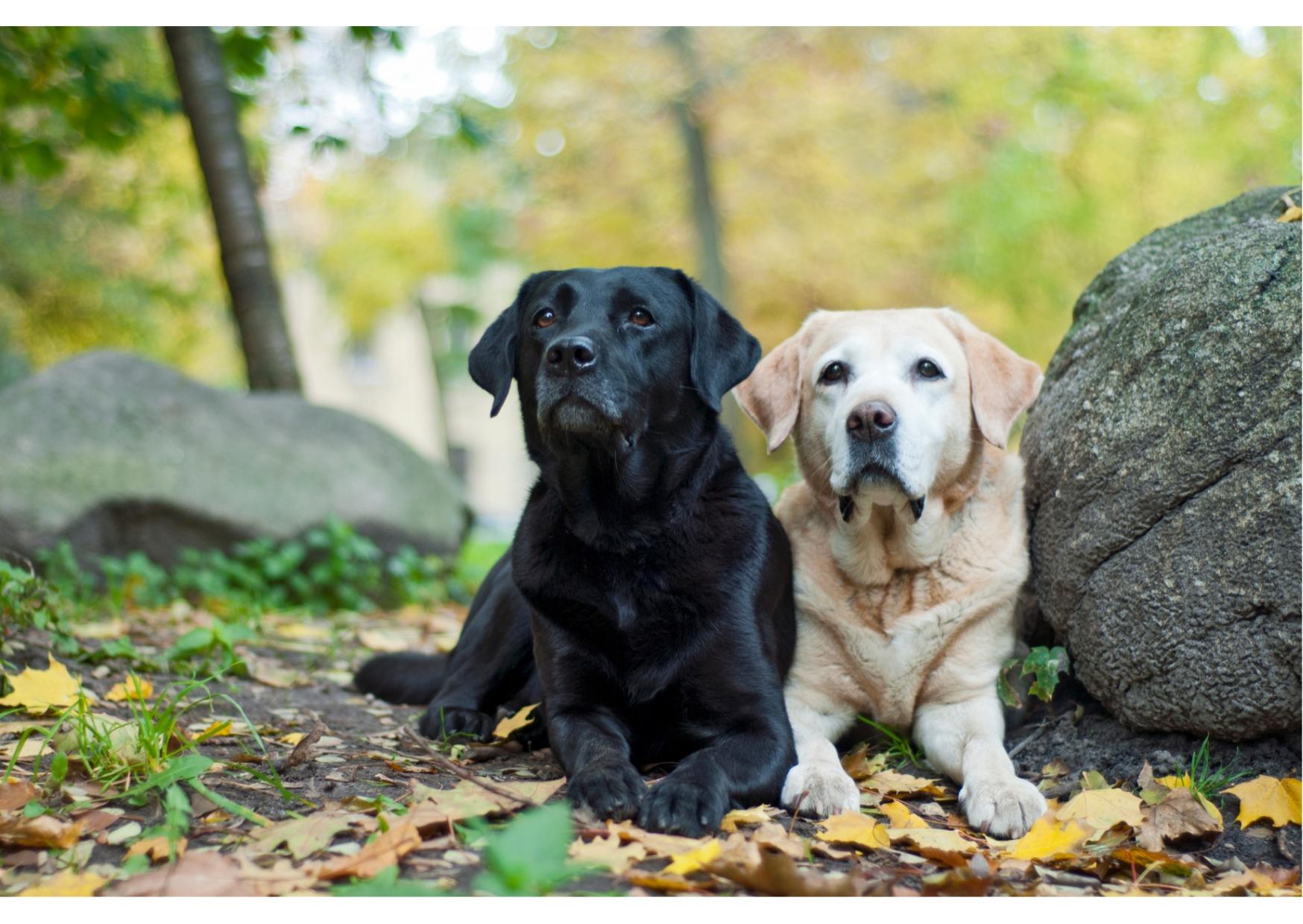LABRADOR RETRIEVER
| Group: | Sporting |
|---|---|
| Size: | Large |
| Temperament: | Cheerful, Energetic, and Extroverted |
| Height: | 22-24 inches (male), 21-23 inches (female) |
| Weight: | 30-35 Kg (male), 25-30 Kg (female) |
| Life Expectancy: | 10-12 years |
| Origin: | Canada |
| Coat Length: | Short |
| Coat Type: | Double |
| Color: | Yellow Black Chocolate |
About
The Labrador Retriever is one of the world's most popular breeds. The Labrador Retriever is a sociable and attractive breed that is affectionate and strong. Medium to huge in stature, they have fascinating eyes and strong jaws. These dogs are wonderful family companions because of their kind and sensitive personalities. They are excellent for sports like hunting, retrieving, and agility training since they are extremely trainable and clever. They also make excellent therapy dogs due to their friendly temperament
Nutrition
Labrador Retrievers are voracious eaters and can easily become obese if overfed. Limit treats, make sure your Lab gets ample exercise, and provide regular meals instead of leaving food out all time. Also, be aware that the Lab's appetite includes human food and even inedible stuff. Labradors will scavenge in the garbage, surf your counter, and eat chewed-up items including children's toys.Make sure the meal is rich in vitamins and minerals to help strengthen their joints so they can support the weight of their muscles and nourish their thick, water-resistant coats.
Ideal Meal Breakdown
Protein
27
Fat
16
Carbohydrates
49
Others
8
Exercise
Because of their exuberance and energy, labradors need frequent exercise to release their stored energy. Without it, they could engage in dangerous activities like gnawing and digging. Isolation is something they can't take, so if you have a Lab, make him a member of your family rather than an outdoor dog. Retrievers perform exceptionally well in canine sports such as agility, obedience, tracking, and dock diving.
Grooming
In terms of grooming, labradors need little effort.Their coat has two layers, a short and thick topcoat and a weather-resistant undercoat. Give them a wash occasionally, and brush their coats on a daily basis. Shedding, however, is very real when you own a lab so be prepared for fur. If your lab's nails do not naturally wear down, clip them once a month. Check their ears for signs of an ear infection on a regular basis.
Training
Early socialisation and puppy training is absolutely vital for your Lab. provide your lab puppy with exposure to a wide variety of people, places, and situations between the ages of 7 weeks and 4 months. Obedience training early on will help him develop into a well-adjusted, well-mannered adult. Labs take on training very well and they excel in obedience training.
Health
Labrador Retrievers are generally healthy dogs. They are, nevertheless, prone to certain health issues, such as elbow and hip dysplasia, hereditary myopathy (muscle weakness), heart disorders, and eye conditions such as progressive retinal atrophy. Bloat, a life-threatening gastrointestinal illness often affects labs like other large, deep-chested dog breeds.
History
The Labrador Retriever is Newfoundland's traditional waterdog, long used as a duck retriever and fisherman's mate. Labs were perfect for the job with their water repellent coat and webbed paws. The breed's steady rise to supremacy began in the early 1800s when English nobles visiting Canada spotted them. Once they were brought to England, they caught the eye of the Earl of Malmesbury, who acquired some of the water-loving dogs to hunt the swamplands surrounding his estate. The Earl’s son began breeding the dogs and it was he who gave them the name Labrador. It was the British breeders that refined and streamlined the breed in the latter 19th century.
